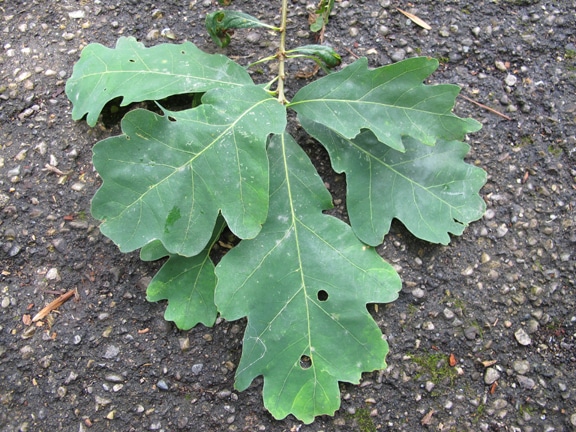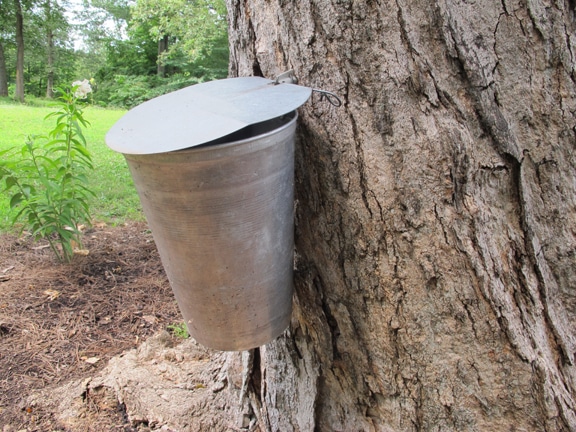6 Trees Every Survivalist Should Know
Editor’s Note: This guest post by Creek Stewart first appeared at willowhavenoutdoor.com.
“Living in the open in this way, and making friends of the trees, the streams, the mountains, and the stars, gives a scout a great deal of confidence and makes him love the natural life around him. To be able to tell the difference between the trees by their bark and leaves is a source of pleasure; to be able to make a bed out of rough timber, or weave a mattress or mat out of grass to sleep on is a joy. And all of these things a good scout should know.” —Boy Scouts Handbook, First Edition, 1911
Being able to identify trees can not only be a source of pleasure, as the first Boy Scouts Handbook opined, but a matter of survival. If you become lost in the woods, trees are an abundant and easy-to-utilize resource, and can be used in a variety of ways, including as food, shelter, cordage, and materials for fire-starting and tool-making.
Below we discuss how to identify six trees that are particularly useful in survival scenarios, and the different ways they can be employed to keep you alive. Keep in mind that because many trees drop their leaves in the fall, it’s important to be able to identify them by both their leaves and buds, and their bark.
White Birch (Paper Birch)

White birch is easy to identify with its distinctive, white, papery bark. The sycamore tree also has white bark, but it does not sluff off in thin, paper-like furls like the white birch. The sycamore also has large hand-shaped leaves versus the white birch’s smaller, oval-shaped leaves with a pointed tip. The birch leaf is also irregularly toothed. These grow almost exclusively in northern climates.

White birch survival uses:
- Sweet drinkable sap that does not need purification.
- Containers can be fashioned from the bark (and even canoes – hence the nickname “canoe birch”).
- Its papery bark makes some of the finest fire-starting tinder on the planet, which will light even when damp because of its resinous quality.
- A fine tea can be made from the small twigs at the end of a branch or by shaving the bark from new growth. Toss a palmful of these elements into boiling water for a fresh, wintergreen-flavored tea.
- The tinder fungus (chaga — a variety of mushroom that grows on the tree bark) grows almost exclusively on the white birch tree. The fungus is one of the only natural materials I know of that will take the spark from flint and steel. A piece of tinder fungus along with flint and pyrite to create sparks were even found on Otzi, the “iceman” who was uncovered in the Austrian Alps several years ago.
- Pine tar can be extracted from the bark of the white birch by heating it over a fire. Pine tar makes an excellent natural adhesive, which indigenous peoples used for all kinds of purposes including securing stone points on arrows.
American Basswood

The American basswood (also called American linden) is a very common tree – especially in the eastern U.S. It prefers moist soil and is often found by creeks, streams, and ponds. It likes to grow several shoots from the base so it’s not uncommon to see the basswood growing in what appears to be clumps. Basswood trees have large, heart-shaped, coarsely-toothed leaves and dark red young leaf buds. One of the most distinctive features of the basswood is what I call the “tongue.” A tongue-shaped leaf (the small, light green leaf in the picture above) grows at the base of the regular heart-shaped leaves on mature trees. Hard, little, nut-like fruits dangle from the center of this “tongue” leaf throughout the summer.

Basswood survival uses:
- Delicious edible leaves – especially in spring.
- “Bass” comes from the word “bast,” which is an old word for rope. The inner fibers from the basswood make some of the best natural cordage on the planet. In one of my wilderness courses, two adult men could not break a 1/2″ thick strip of basswood bark.
- Basswood is my favorite wood to use in fire by friction setups. It is soft and makes a perfect friction firewood for bow drill spindles and hearthboards and for hand drill hearthboards.
- Basswood is preferred by most wood carvers and chainsaw carvers because of how easy it is to work and carve.
- Inner bark layer is edible and can be scraped off with the edge of your knife. It has a very sweet flavor.
White Pine

The leaves of the white pine grow in batches of five needles. Every fall the white pine loses all of its needles, except those that grew that year. Pine is an evergreen; evergreen trees keep some green leaves year-round, unlike deciduous trees, and have needle-like leaves. They also produce cones (pine cones) instead of flowers.

White pine survival uses:
- Resin can be used as a fire extender when mixed with tinder material.
- Resin can be heated and mixed with crushed charcoal to make a natural epoxy.
- Resin-rich joints and stump pieces make incredible fire kindling.
- Make pine needle tea from the green pine needles – very rich in Vitamin C.
- Inner bark layers are edible.
- Harvest pine nuts from the pine cones.
- Pine needles make excellent fire tinder.
- Pine needles make excellent natural insulation material for debris huts and survival shelters.
- Green pine boughs are perfect for lean-to shelter roofs.
- Green pine boughs are great for making a bed to protect from the cold ground or snow.
- The lower, dry, dead branches of the pine tree (squaw wood) is often some of the driest fire kindling available. It is exposed to the wind and also protected from the elements by the year-round needle canopy above. I’ve also used these branches for making bow drill fire friction sets.
- Very effective candles and lamps can be made from pine resin.
- Pine resin can be used to waterproof seams in clothing or crude containers.
- The very pliable surface layer roots make excellent (and strong) natural cordage. Use as a whole or split into smaller pieces.
White Oak

White oaks have rounded leaf lobes instead of pointed ones like red oaks. Contrary to popular belief, acorns are edible. I like white oak acorns better because it seems they are less bitter and it takes less effort to leach out the tannic acid (which causes this bitterness) to become more palatable. An abundance of acorns in mid-summer makes the oak family almost impossible to misidentify. Oaks are some of the largest trees in the forest; I have many white oaks at Willow Haven that are over 100 feet tall and easily 3-4 feet in diameter.
White oak survival uses:
- Acorns (after leaching out the tannic acid) can be ground and used as flour to make acorn bread.
- Tannic acid (which can be extracted by boiling or leaching acorns and/or inner oak bark and twigs) is anti-bacterial. I’ve used it as an antiseptic wash before and have heard of it being used to quell diarrhea.
- Acorns can be used as trap bait for squirrel and other small game animals.
- Can tan leather using the tannic acid found in bark, acorns, and wood.
- Oak is a very hard wood that is good for ax handles, digging sticks, and shelter frameworks.
- When dried, the white oak flowers make suitable tinder bundles and can be found in great abundance certain times of the year.
Sugar Maple

The sugar maple is one of my favorite trees and probably one of the most abundant in the Eastern woodlands. Its beauty is on full display when the leaves change each fall into bursts of red, orange, and yellow. The leaves usually have five lobes, and the tips are pointed. Young maples have smooth silvery bark. The unmistakable “winged helicopter” seeds are a tell-tale maple tree indicator. The sugar maple is the source for maple syrup; this tree is preferred because its sap has high sugar content. It takes 40 gallons of sugar maple sap to make 1 gallon of maple syrup.

Sugar maple survival uses:
- In late winter/early spring when the sap is running, the sugar maple is an excellent source of drinkable water (sap) that needs no purification. Maple sap is nature’s version of an energy drink – rich in sugar and nutrients. I’ve filled a 1-liter canteen in as few as 15 minutes before. Maples don’t have fully developed (or any) leaves during this time of year – hence the importance of being able to identify in all four seasons.
- The seeds inside the little helicopters are edible, just like edamame. I just boil them and lightly salt. They can also be fried or added to stews. Remove the outer helicopter.
- I almost always use maple branches for wilderness cooking. Whether it’s a spit roast, a hot dog stick, or utensils, I can always find a maple branch suitable for the task. Maple branches naturally have a lot of forks, which is great for pot holders and other wilderness kitchen uses. I also use the leaves to wrap fish or other small game animals when cooling in an earth oven.
- Young maple leaves are also edible. Toss them into a salad or boil them down with other spring greens. They get bitter and rough as they mature.
Willow Tree

There are tons of different willow varieties, but every willow I’ve seen has a similar leaf shape. The leaves are narrow, lance-shaped, and grow in great numbers along the branches. Willows must be in moist areas to survive. If you’ve found a willow, then there is a water source nearby.
Willow survival uses:
- Willow bark contains a chemical called salicin, which is similar to aspirin. I can personally attest to its effectiveness in relieving headaches and inflammation. Just chew on a few small green twigs and swallow the juices.
- In spring and summer, willow bark will peel away from the wood and makes excellent cordage that can be used for a huge variety of tasks.
- Young willow branches and saplings are very flexible and can be used to weave a variety of different baskets and funnel traps.
- I’ve used dried willow wood on many occasions for friction fire sets – both hand drill and bow drill.
- Willow saplings make excellent frog and fish gigs.


No comments:
Post a Comment